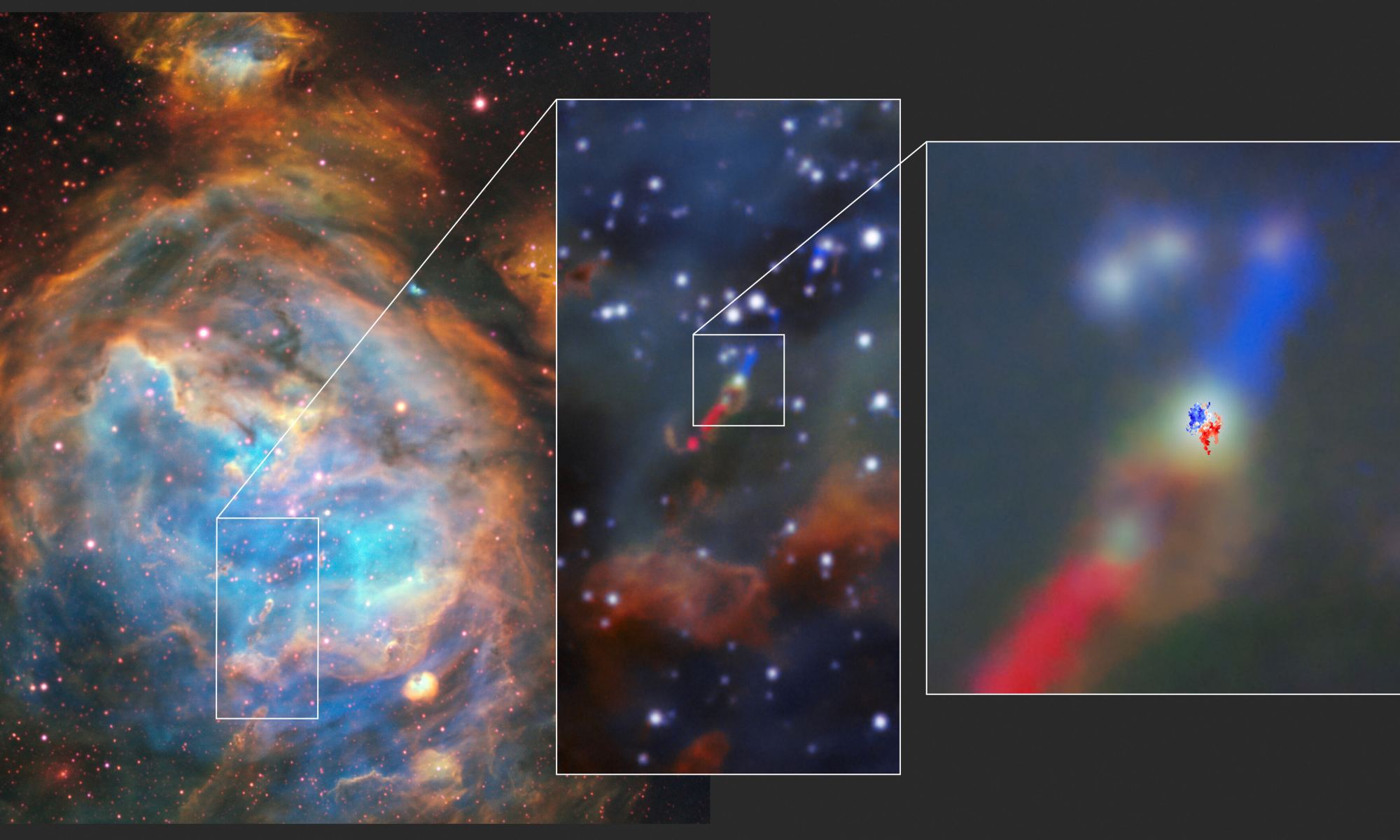Astronomers have imaged dozens of protoplanetary discs around Milky Way stars, seeing them at all stages of formation. Now, one of these discs has been found for the first time — excitingly — in another galaxy. The discovery was made using the Atacama Large Millimeter/Submillimeter Array (ALMA) in Chile along with the , which detected the telltale signature of a spinning disc around a massive star in the Large Magellanic Cloud, located 160,000 light-years away.
“When I first saw evidence for a rotating structure in the ALMA data I could not believe that we had detected the first extragalactic accretion disc, it was a special moment,” said Anna McLeod, an associate professor at Durham University in the UK and lead author of the study published in Nature. “We know discs are vital to forming stars and planets in our galaxy, and here, for the first time, we’re seeing direct evidence for this in another galaxy.”
McLeod and her fellow researchers were doing a follow-up study on a system named HH 1177, which was located deep inside a gas cloud in the Large Magellanic Cloud LMC). In 2019, the researchers reported that in using the Very Large Telescope, they observed a jet emitted by a fledgling but massive star with a mass 12 times greater than our Sun. This was the first time such a jet has been observed in visible light outside the Milky Way, as they are usually obscured by their dusty surroundings. However, the relatively dust-free environment of the LMC allowed for HH 1177 to be observed at visible wavelengths. At nearly 33 light-years in length, it is one of the longest such jets ever observed.

“We discovered a jet being launched from this young massive star, and its presence is a signpost for ongoing disc accretion,” McLeod said in an ESO press release. But to confirm that such a disc was indeed present, the team needed to measure the movement of the dense gas around the star.
The gas motion indicated that there is a radial flow of material falling onto a central disk-like structure. In their new observations, the team found that the disk exhibits signs of Keplerian rotation – which is a disk of material that obey’s Kepler’s laws of motion due to the dominance of a massive body at its center. Their observations revealed that “the rotating toroid [was] feeding an accretion disk and thus the growth of the central star,” the McLeod and team wrote in their paper. “The system is in almost all aspects comparable to Milky Way high-mass YSOs (young stellar objects) accreting gas from a Keplerian disk.
As matter is pulled towards a growing star, it cannot fall directly onto it; instead, it flattens into a spinning disc around the star. Closer to the center, the disc rotates faster, and this difference in speed is the clear evidence to show astronomers an accretion disc is present.
“The frequency of light changes depending on how fast the gas emitting the light is moving towards or away from us,” said Jonathan Henshaw, a research fellow at Liverpool John Moores University in the UK, and co-author of the study, in the ESO press release. “This is precisely the same phenomenon that occurs when the pitch of an ambulance siren changes as it passes you and the frequency of the sound goes from higher to lower.”
Massive stars like HH 1177 live fast and die hard. In the Milky Way, stars like this are challenging to observe because they are often clouded from view by the dusty material from which they form — which also obscures the disc that might be shaping around them.
“They form in heavily embedded regions full of gas and dust, such that the accretion phase typically occurs before the star has time to become exposed due to stellar feedback, whether internal or external,” the team wrote in their paper. “The primary reason for the lack of observations of extragalactic accretion disks around forming stars has been the limited spatial resolution of both ground- and space-based observatories.”
But the Large Magellanic Cloud is fundamentally different from because the stars that form there have a lower dust content than in the Milky Way. Because of that HH 1177 is no longer cloaked in its early dust cloud, providing astronomers an unobstructed view, even though it is so far away.
The researchers said the instruments on ALMA enables the high-sensitivity and high-angular-resolution observations needed to detect and resolve rotating circumstellar gas in the LMC.
“We are in an era of rapid technological advancement when it comes to astronomical facilities,” McLeod says. “Being able to study how stars form at such incredible distances and in a different galaxy is very exciting.”

